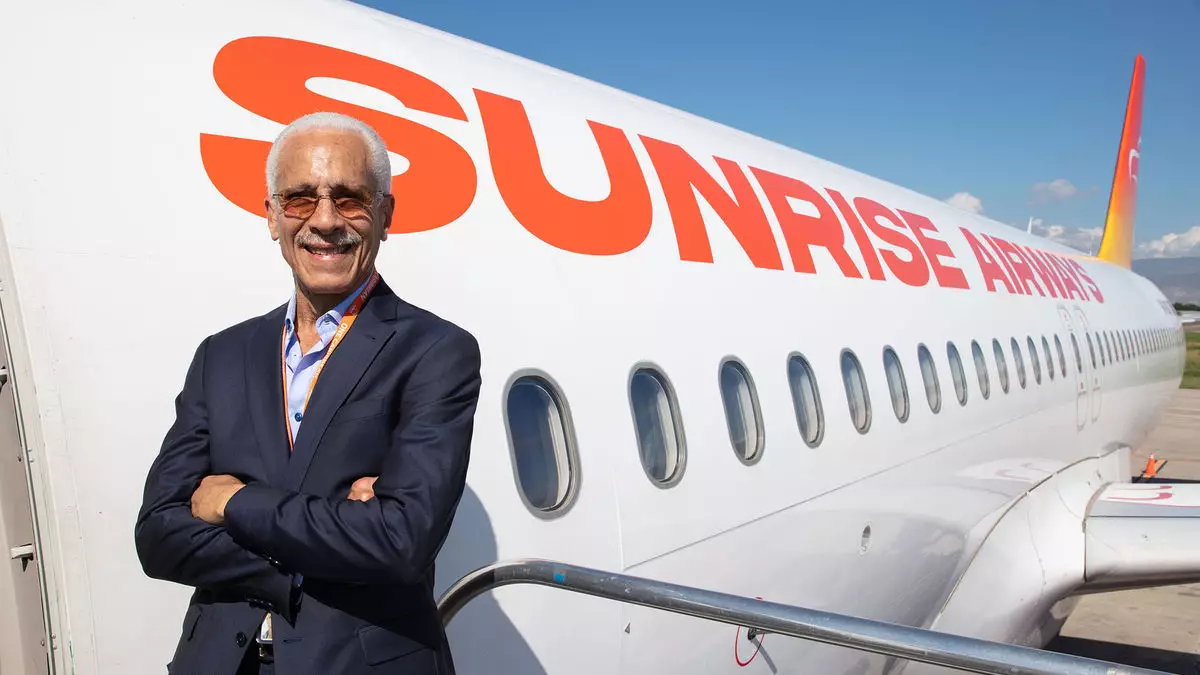The Caribbean is poised at the crossroads of transformation, with the year 2025 looking promising for interisland tourism. Historically, this captivating region has struggled with persistently high travel costs, cumbersome layovers, and a limited range of flight options. However, recent shifts in regional aviation strategies signal an optimistic trend that may finally open the doors for more fluid and accessible travel among the islands.
Nicola Madden-Greig, the outgoing president of the Caribbean Hotel & Tourism Association (CHTA), has boldly asserted that air transport remains paramount for the Caribbean tourism sector’s expansion. “Adequate airlift at a price point is a huge challenge,” she noted, reflecting the gravity of the situation. Yet, there is a palpable sense of progress as regional airlines step up efforts to bolster connectivity across the archipelago. Entities like InterCaribbean, Cayman Airways, and Caribbean Airlines are forging ahead with network expansion, while Bahamas Air sets its sights on the Jamaican market. Each of these airlines is focused on making travel not just easier, but also more attractive for both regional passengers and those arriving from abroad seeking to experience multiple Caribbean destinations.
Madden-Greig’s recent ventures included a familiarization trip that showcased the diverse offerings across iconic islands like Barbados, St. Lucia, Jamaica, and the Cayman Islands. By encouraging direct comparisons between these varied locales, she aims to illustrate the Caribbean’s potential as a multi-destination travel hub akin to Europe. “We haven’t positioned the Caribbean that way before,” she remarked, emphasizing the diversity in energy, culture, and cuisine that each island presents. This realization is a step toward promoting the Caribbean as a collective rather than a series of isolated destinations.
However, despite these positive developments, significant challenges remain. Claudio Buncamper, the COO of Sunrise Airways, outlined the ongoing barriers that travelers face within the region. Though more airlines have entered the mix, interisland travel can still be convoluted and frustrating. Buncamper lamented the necessity of overnight stays in hub cities, a practice that delays travel times and diminishes convenience, as exemplified by needing to overnight in Trinidad just to reach St. Vincent from St. Maarten.
To combat this issue, Sunrise Airways has been proactive in launching new routes and expanding existing ones, targeting places like Antigua, Dominica, St. Kitts, and St. Lucia, with future plans that include Grenada and Tortola. Yet Buncamper is acutely aware of the aviation industry’s complexities in the Caribbean, where the reality is that operating short routes is financially burdensome, exacerbated by high taxation. He pointed out that in some scenarios, taxes imposed by different governments can account for up to 60% of a flight’s fare. This creates a significant barrier for interisland travelers, making trips unaffordable for many families.
The conversation does not end with airlines alone; economic insights from industry experts urge broader reform. Steve Bennett, co-founder of Uncommon Caribbean, criticized the region for its layered taxation that undermines competitiveness and inhibits economic stimulation. He contends that lowering air travel taxes and fostering open-skies agreements could yield a massive boost to multi-island tourism.
Furthermore, while ferry services thrive between certain Windward Islands, there remains a glaring absence of viable and economical travel alternatives for those looking to explore attractions further north. Addressing these gaps is essential for fulfilling the promise of a truly interconnected Caribbean.
Despite the obstacles, the horizon for Caribbean travel in 2025 appears promising. With airlines such as InterCaribbean, Winair, and the reinvigorated LIAT 2020 ramping up their presence in regional service, the increasing number of routes and flights offer hope for enhanced travel accessibility. However, the efficacy of these initiatives will ultimately depend on the ability to reduce ticket prices to levels that facilitate interisland travel for ordinary tourists and locals alike.
As Madden-Greig so aptly summarized, „There’s a lot happening in the space to make it easier.“ Through collaborative efforts among airlines, tourism boards, and governing bodies, the potential exists not only to make exploring diverse Caribbean islands a possibility but also a convenient and financially reasonable endeavor. Yet as Buncamper wisely noted, failure to cooperate and a mindset of self-reliance may lead to repeated pitfalls experienced by previous airlines. The Caribbean’s future—a region rich in culture, biodiversity, and experience—depends not only on enhancing connectivity but on doing so in a well-coordinated manner that prioritizes the traveler’s journey.


Napsat komentář